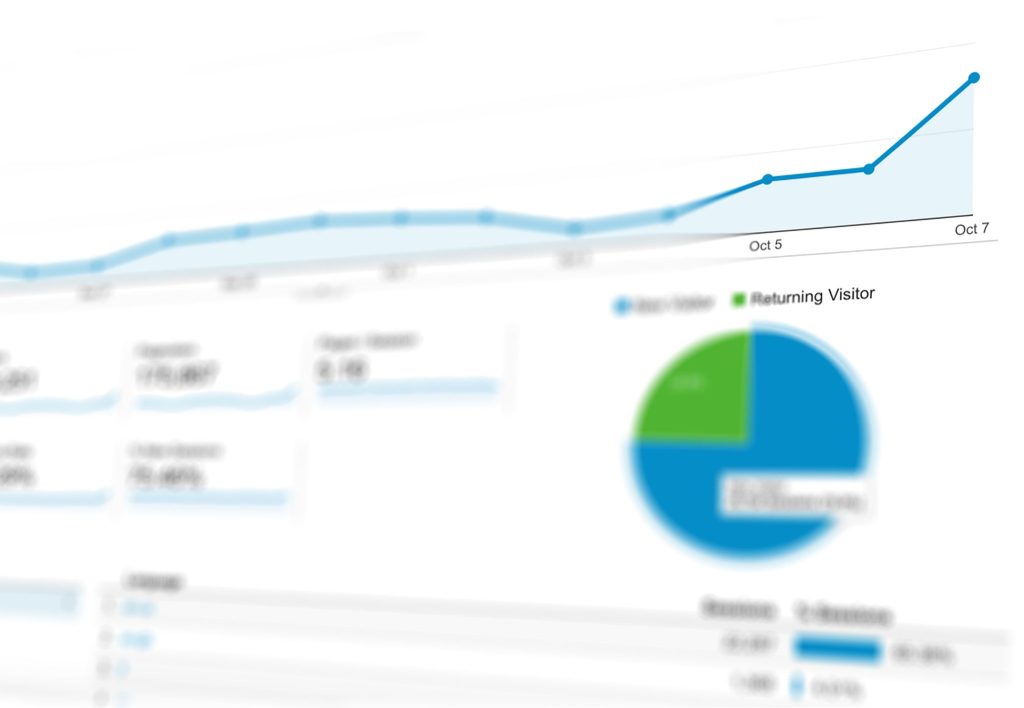Impressions, clicks, CTR, queries, position, bounce rate, time on page. These are just a few examples of the overarching data that you can derive from Google Analytics and Google’s Search Console (formerly known as Webmaster Tools). It can all get rather confusing, especially when they all have their own merits for understanding the success of an SEO campaign. We wanted to deep dive into how you can improve your website’s appearance in search, therefore improving click-through rates from search engine results pages.
High CTR = More Traffic
The benefits seem pretty obvious. If a higher percentage of searchers click on your result then you will receive more traffic to your website which in turn gives you a better chance at converting more customers. That’s great, and on the whole this is true but there is another string to CTR’s bow. Be warned though, it can be a contentious issue. However, the people that we at Yellowball trust in the world of SEO (the likes of Rand Fishkin or Larry Kim) appear to be on the same page here: a higher CTR will eventually impact your ability to rank.
Whether or not you believe that a higher CTR affects rankings, it cannot be denied that increasing your CTR via search can only be beneficial. Now that we have that cleared up, let’s look at some first steps to attracting more of those potential users.
Title Tag
We wish title tags didn’t come in conversation as much as they did – title tags are SEO 101 stuff and one of the most basic items to address in a campaign. The reason why they come up so much? Well, they are highly influential, in fact probably more influential than they should be! Anyway, we won’t get into the details of how to implement title tags here and the corresponding best practice.
What we will say is that it is important to take into account what the user will read. They need to be enticing and get the point across – Cyrus Shepherd addresses them in this Whiteboard Friday and there are a number of techniques other than including keywords, such as emotional hooks and numerical lists.
We come across a lot of companies with their brand name as the only element in their title tag which is not particularly informative, nor is it helpful in search. On the other hand we also see title tags that are too long and truncated (cut off) without actually telling the user what the page is about. Be conscious of the limitations of a title tag and look to make it clear to the user that your page can offer them exactly what they are searching for. Remember that title tags are one of the most prominent elements of most search results so pay attention to them!
Meta Description
Yes, Google do not take meta descriptions into account when ranking websites… except that they make exact match keywords bold in search results and they have an impact on CTR (and therefore rankings if the aforementioned experts are to be believed). So in a roundabout way they still affect a site’s ranking. Regardless though, they certainly affect CTR.
Make them descriptive, to the point and enticing, much like an extended version of your title tag. Don’t leave them blank – Google will just scrape the initial content from that particular page and as such it would be a wasted opportunity. Again, like the title tag, give the people what they want!
URL Structure
This may seem pedantic but everything counts. What are you more likely to click on: a search results with a nice and clean URL structure or one that is super long and full of random numbers? If you don’t know the answer, it’s the first one. Excessively long and nonsensical URLs are often associated with poor quality websites and even viruses, so don’t take the chance. A couple of examples would be:
weareyellowball.com/seo
weareyellowball.com/serv/prod/details?idprodjn13unoon/seo-89%A0-lkncqlk*&%naoub/
All other things being equal, which one would you click on?!
Schema Markup and Rich Snippets
Have you ever seen search results that display the price, dates for events or user reviews as part of the search results? Eye catching aren’t they?
These are called rich snippets and are created through the use of Schema Markup. It is essentially information added to your site which gives search engines more detail on the meaning of the content. Visit Schema.org for more information on the types of fields that are available to you and how to implement Schema Markup. If you don’t want to bamboozle your mind with Schema language then you can use the easy way out via Search Console’s Data Highlighter.
This tool allows you to tag certain content on your web pages via your Search Console. Bear in mind though that the Data Highlighter only gives Google this information but hell, it’s not as if anyone uses Ask Jeeves anymore (hint: if you do, know that there are better search engine options out there).
Google My Business
Branded search terms (i.e people searching for your brand name) are likely to form the majority of search results that display your My Business profile on the right hand side of the search results. However, it is best practice to cover all the bases and you would be kicking yourself if your CTR for branded search terms was particularly low. Another free hint: it should be very high.
It comes down to giving the user as much great information as possible, including:
- A logo that fits the image field properly instead of being cropped
- Make sure that there are some high quality images on your GMB profile which can be displayed as part of your profile
- Opening hours if you are a business
- Telephone number
- User reviews – there are some scary statistics out there on the percentage of consumers that read reviews before making a purchasing decision. Get that social verification!
SiteLinks
Much like your Google My Business Profile, sitelinks are likely to only appear for branded search terms but again like your GMB profile, they can have a profound effect on CTR. This may be the first interaction that a consumer has with your brand so why not make it as good as possible – first impressions count.
You can’t dictate to Google which pages you want to appear as sitelinks, but you can give some pretty strong hints such as making sure the pages you want featured are in prominent positions in your sitemap and menu. You can also use your Search Console account to tell Google which pages you do not want featured in your sitelinks which helps to give Google direction. The aim? To have sitelinks to pages that you want your users to navigate to, the most attractive, relevant and valuable results for searchers and potential customers.
HTTPS
This may be a bit of an obscure one but with the growth of https websites being returned as page one results it could give you that extra edge if you are a large business, or as https is more widely accepted. Simply having ‘https’ in your URL may help with CTR but only marginally. Instead, if you look at larger website such as Facebook, Twitter or The Guardian, some anti-virus softwares like Mcafee will display a green tick and a reassuring Mcafee stamp in the search results, showing that the site is safe to click on.
Admittedly this is currently only affecting large international websites, but if you happen to be reading this as head of SEO for a large company without https you may want to think about implementing it. Just saying.
So there you are. Six relatively simple tips to improve your click-through rates from the search engine results pages. Just another aspect that we take into account when running SEO campaigns, dedicated to the cumulative effect of marginal gains.









